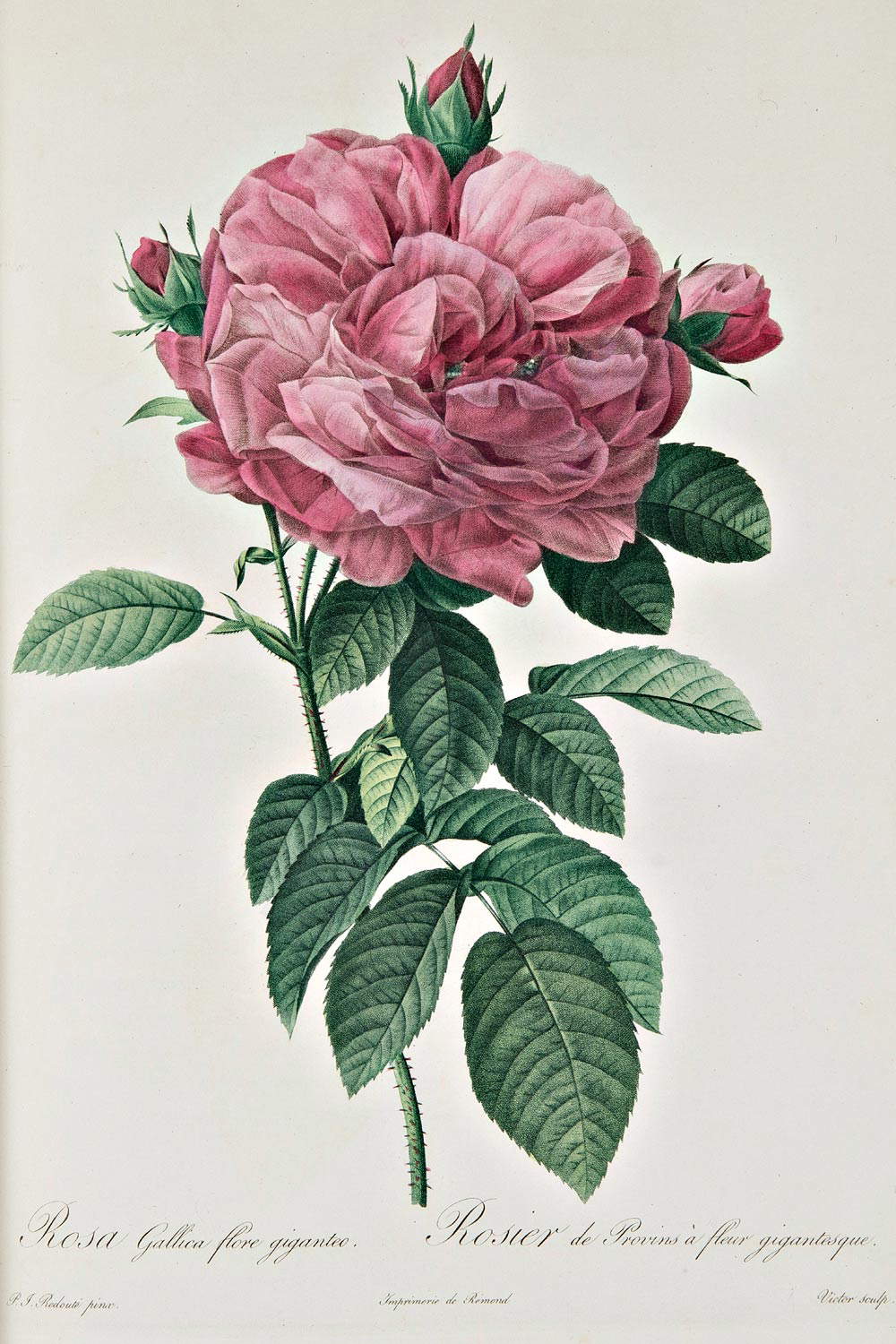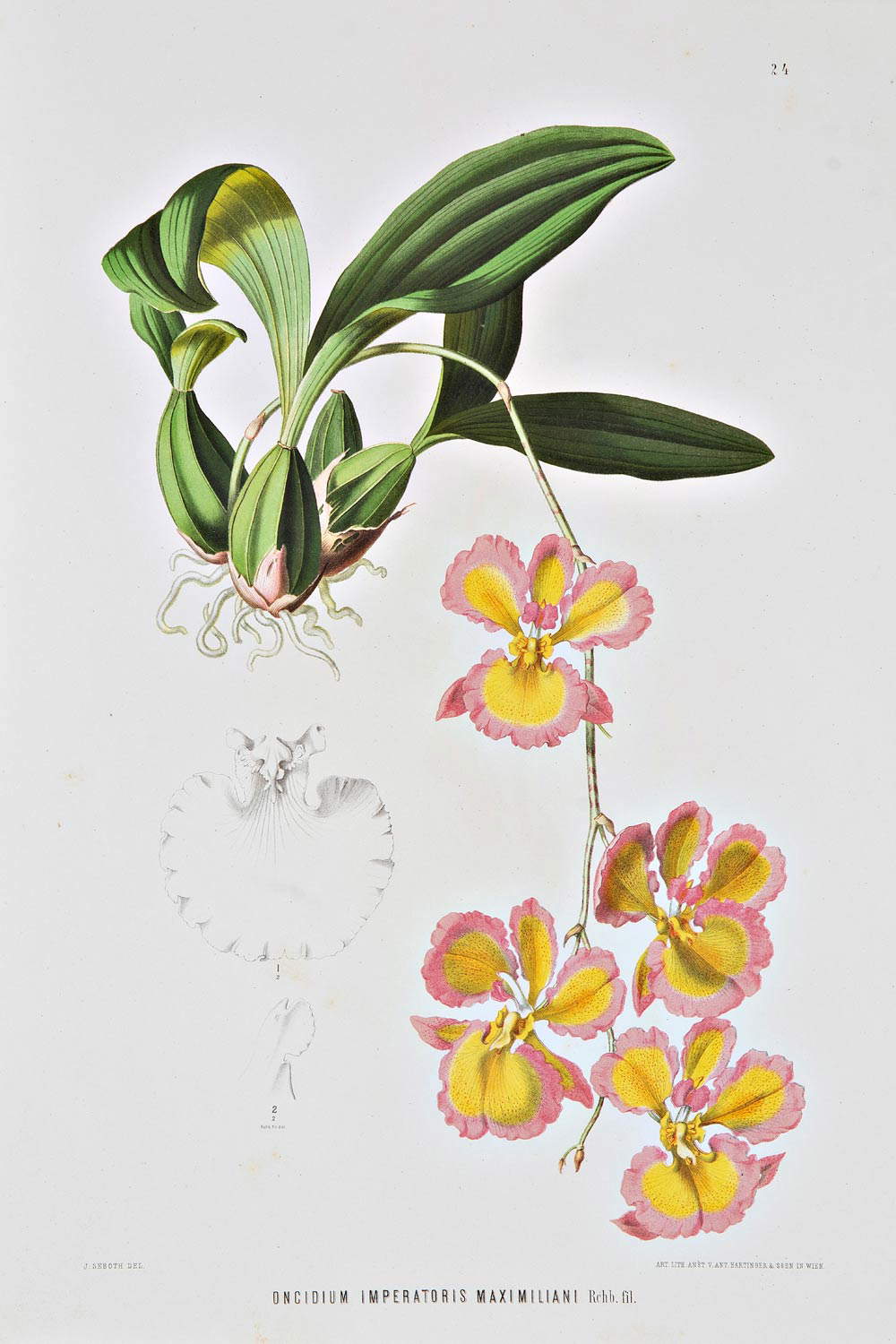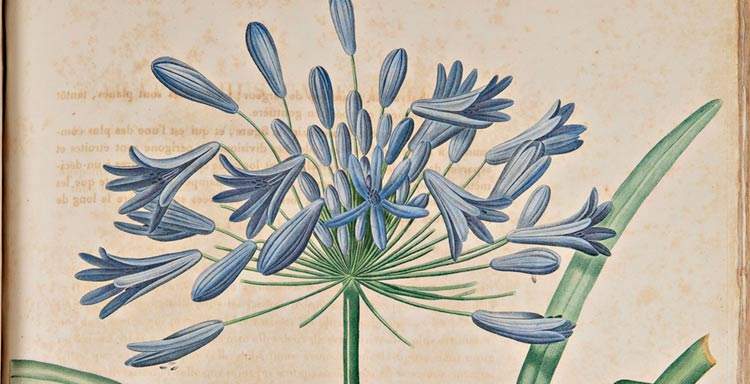From September 15, 2022 to June 11, 2023, the Miramare Castle in Trieste opens a window on the Miramare Library and its treasure chest of never-before-revealed books concerning botany, flowers, plants, and gardens, thanks to the exhibition Ars Botanica. Gardens of Paper, an exhibition showcasing botanical books that can reveal the interests and knowledge of those who conceived the Castle garden in its most intimate inspiration. The garden that surrounds the Castle, desired by Archduke Maximilian Ferdinand of Habsburg and his consort Charlotte of Belgium, is in fact a utopian creation, a world at once natural, artificial and artistic, in which an ideal of perfection, beauty and relationship with nature takes shape, and knowing the books that were read and studied by those who created this garden gives us an understanding of Miramare’s Genius loci, its botanical soul informed by journeys of discovery and exploration, its aesthetic notion.
The library is a garden on paper that guides us to the path of dream and meditation conceived in a cultured aristocratic salon of the 19th century and reveals the fundamentals of the living garden by inviting the visitor to discover how the latter is reflected in its books and how the ars botanica is reflected in the castle’s furnishings.
The exhibition, curated by Andreina Contessa, director of the Historical Museum and the Park of Miramare Castle, displays a selection of the more than one hundred books dedicated to the themes of botany and gardens in the Miramare Library and never exhibited before, a series of previously unpublished objects from the museum’s collection, a valuable Flemish painting from the Royal Museums of Turin, and some historical artifacts from the Civic Museums of Trieste. Accompanying the exhibition are more than two thousand images of flowers and plants created in the 19th century and drawn by the leading botanical illustrators of the time. The exhibition briefly traces the history of botanical illustration, a genre hovering between the worlds of art and science, which has ancient historical roots, initially linked to pharmacopoeia. Gradually botanical science evolved into a discipline in its own right dedicated to the study of plant species and involved the creation of new illustrations and life drawings by specialized artists. In the 19th century, botany also became intertwined with horticulture and biology, and botanical treatises became popular books even among women, for whom dedicated books were produced.






In addition to rare and exotic plants, local floras and books on anatomy and morphology multiplied: two moving specimens of plants collected in the mid-19th century in Miramare Park testify to this trend. A section of the exhibition is also dedicated to Maximilian the botanist, an even larger one uncovers for the first time Charlotte’s passion for botany, and reveals perhaps her unprecedented role in the creation of the Garden. Again, a bibliobox opens two windows on the botanical books of the Miramare Library, one dedicated to the archduke’s books, and one to those of his consort. Another section is reserved for Books and Gardens and the various treatises on landscape architecture, gardens and their buildings, and descriptions of European parks. The design of Miramare Park, in which various models and different concepts of gardens coexist, should be placed in this context of profound renewal in the conception of gardens.
Closing the exhibition are two short sections: Castle in Bloom, which invites us to look with new eyes at the objects and furnishings of the Castle, searching for floral and botanical elements, of which there are many; and TheSoul of the Garden, which invites us to find in the Park the Genius loci of Miramare, and its botanical soul. A rich monograph written by Andreina Contessa accompanies and delves into the subjects of the exhibition, accompanied by a wealth of images, a thematic index of library books, and reasoned entries by Daniela Craso, Registrar of the Library, on a selection of dedicated books. Registrar of the exhibition is Veronica del Re. Assistant curator, is the Collection and Works Handling Manager, Fabio Tonzar. Collaborating for Communication and Promotion is Marta Nardin, with Isabella Franco and Irene The. Technical and Security Coordination is by Carlo Manfredi. Staging and Construction Management is by ropes architects associates. The Graphic Design by Design Associati, and the Exhibition Design by Bottega - Exhibit Architectures.
 |
| Ars Botanica: an exhibition on botanical treatises at Trieste's Miramare Castle |
Warning: the translation into English of the original Italian article was created using automatic tools. We undertake to review all articles, but we do not guarantee the total absence of inaccuracies in the translation due to the program. You can find the original by clicking on the ITA button. If you find any mistake,please contact us.